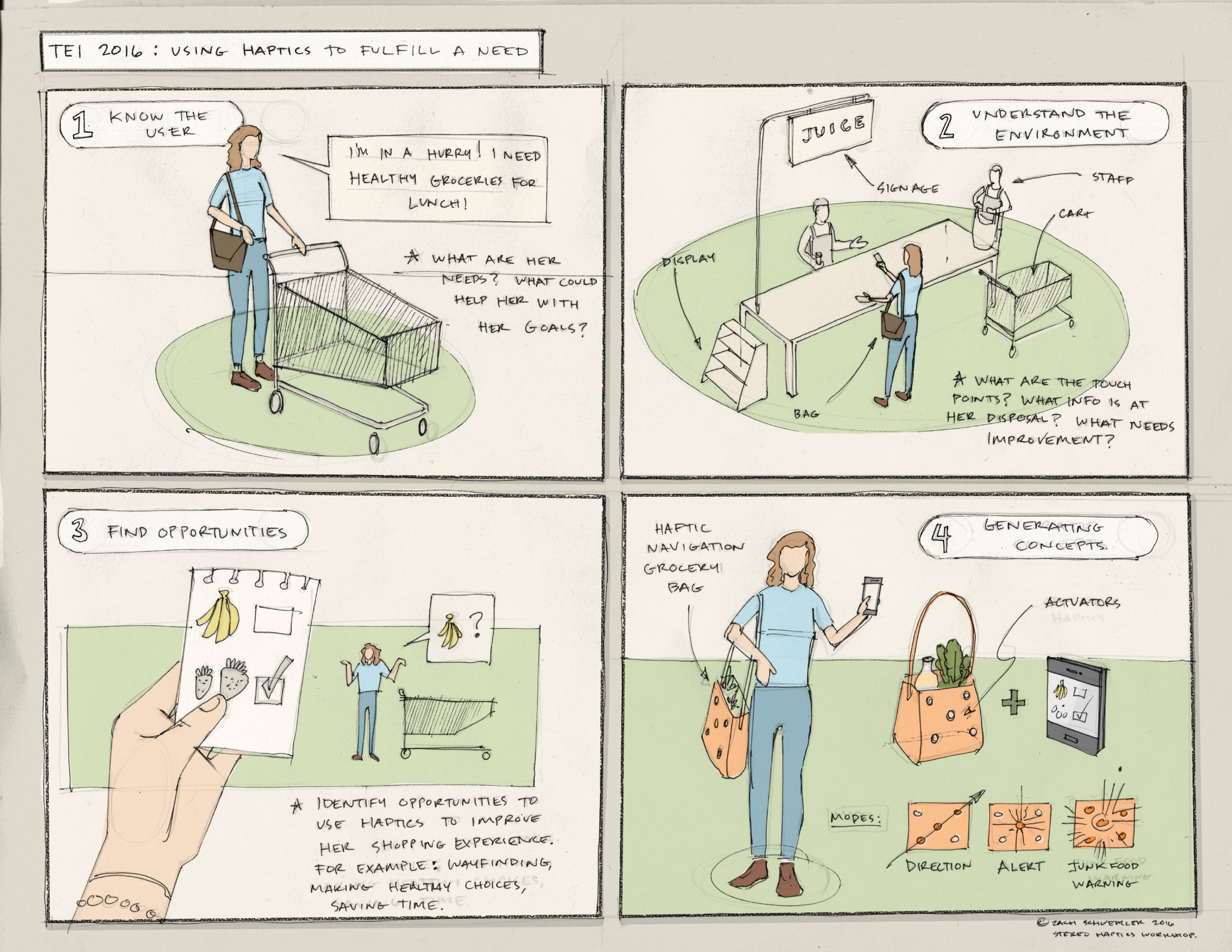Designing With Stereo Haptics (TEI 2016)
Siyan Zhao, Zachary Schwemler, Adam Fritz, and Ali Israr. 2016. Stereo Haptics: Designing Haptic Interactions using Audio Tools. In Proceedings of the TEI ’16: Tenth International Conference on Tangible, Embedded, and Embodied Interaction (TEI ’16). Association for Computing Machinery, New York, NY, USA, 778–781. DOI:https://doi.org/10.1145/2839462.2854120
Role: Concept Development, Curriculum Development, Device Design & Fabrication, Workshop Co-Lead
In February 2016, several Disney colleagues and I presented a design-centric workshop at the tenth anniversary Conference On Tangible Embedded And Embodied Interaction, or TEI 2016, in Eindhoven, NL. Our workshop introduced attendees to our low-cost haptics toolkit called Stereo Haptics, which uses overlapping haptic signals generated via audio files to create illusions of motion between two points. Our toolkit and haptic effects in general have a variety of uses in entertainment and everyday life, and our goal was to introduce this technology in a class setting to see how people respond to it, and what they imagine some future use cases may be. Participants were encouraged to generate their own haptic effects during hardware and software walkthroughs, and later applied this knowledge towards a series of design exercises.
A brainstorming session on augmenting everyday tasks with haptics.
One of the handouts included in the design prompt.
A workshop attendee demonstrating his team's design.
A prototype from another team, used to guide the blind through a grocery store.
A workshop at Avans University in nearby Breda, the Netherlands.
Students from Avans University diagramming their design process.






